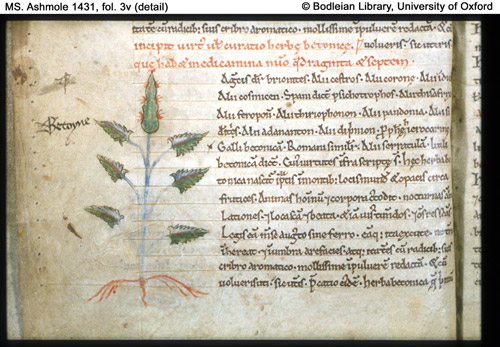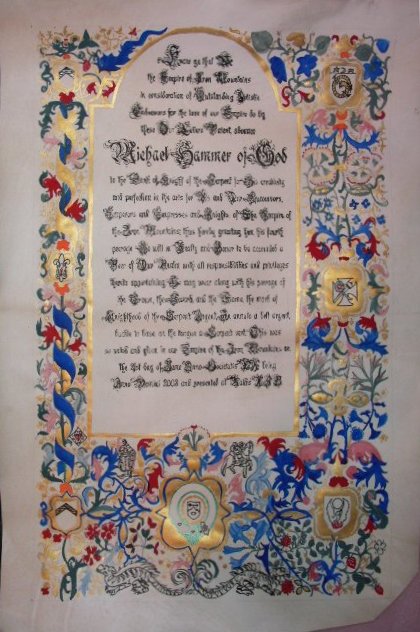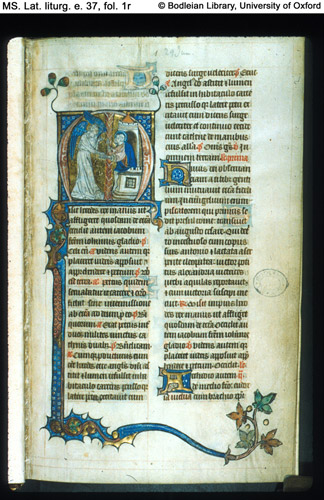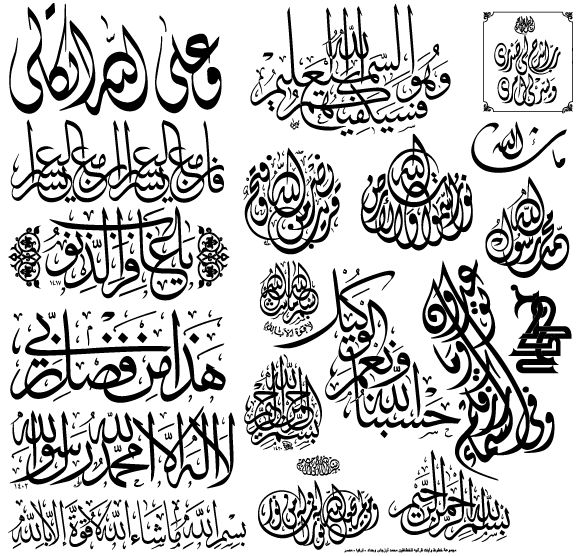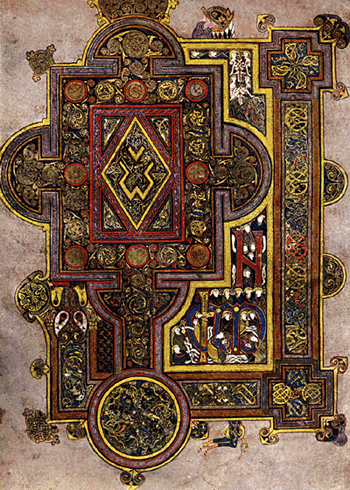Calligraphy
n. The art of writing. A contemporary definition of calligraphic practice is "the art of giving form to signs in an expressive, harmonious and skillful manner". Modern calligraphy ranges from functional hand lettered inscriptions and designs to fine art pieces where the abstract expression of the handwritten mark may or may not supersede the legibility of the letters. In Amtgard Calligraphy of all stripes is used in flyers and in the making of scrolls for awards, titles and other bits of Arts and Sciences.
Contents
Tools
The principal tools for a calligrapher are the pen, which may be flat- or round-nibbed, and the brush. For some decorative purposes, multi-nibbed pens—steel brushes—can be used. However, works have also been made with felt-tip and ballpoint pens, although these works do not employ angled lines. Ink for writing is usually water-based and much less viscous than the oil based inks used in printing. High quality paper, which has good consistency of porosity, will enable cleaner lines, although parchment or vellum is often used, as a knife can be used to erase work on them and a light box is not needed to allow lines to pass through it. In addition, light boxes and templates are used to achieve straight lines without pencil markings detracting from the work. Lined paper, either for a light box or direct use, is most often lined every quarter or half inch, although inch spaces are occasionally used, such as with litterea unciales (hence the name), and college ruled paper acts as a guideline often as well.
Inks
Early varieties include Egyptian ink, various natural dyes made from metals, the husk or outer covering of beans or seeds, and sea creatures like the cuttlefish (known as sepia). India ink is black and originated in Asia. And is know for it's very black color and fishy smell.
Iron gall ink was used by many of the old masters for drawing. It was developed about 1,600 years ago. The recipe was used for centuries. Iron salts, such as ferrous sulfate (made by treating iron with sulfuric acid), were mixed with tannin from gallnuts (they grow on trees) and a thickener. When first put to paper, this ink is bluish-black. Over time it fades to a dull brown. It's tendency to resist bleeding in contact with water made it very popular. It unwise to use this ink on standard modern paper; it's very watery and over time with react with the paper and cause it to discolor and weaken. Besides causing unsightly "ghost writing" on the obverse face of the paper, any excess of ferrous ions remaining in the ink, over years or decades, would create a rusty halo around the marks, and would ultimately cause the paper to disintegrate. Iron gall ink is not suitable for fountain pens as it will corrode them very quickly. Instead one should use modern surrogate formulas such as Montblanc, or Lamy blue-black, which has a very small amount of the ferro gallic compounds, or Rohrer & Klingner "Scabiosa" and "Salix" inks, both of which require the fountain pen to be flushed out regularly with water.
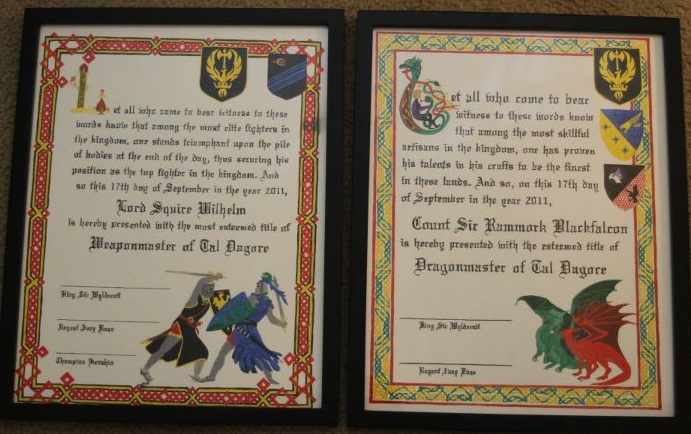
One 12th century ink recipe called for hawthorn branches to be cut in the spring and left to dry. Then the bark was pounded from the branches and soaked in water for eight days. The water was boiled until it thickened and turned black. Wine was added during boiling. The ink was poured into special bags and hung in the sun. Once dried, the mixture was mixed with wine and iron salt over a fire to make the final ink.
In ancient Rome, the term atramentum signified any black colouring substance used for any purpose. The Romans distinguished three principal kinds of atramentum, one called librarium (or scriptorium), another called sutorium, the third tectorium. Atramentum librarium was the writing ink of Roman times, atramentum sutorium was used by shoemakers for dyeing leather, atramentum tectorium (or pidorium) was used by painters for some purposes, apparently as a sort of varnish. It is believed to have been produced with carbon black, or soot.
Modern Calligraphers use inks specifically designed for the purpose, popular brands include
Pens, Quills, and brushes
A writing instrument used to apply ink to a surface, usually paper. There are several different types, including ballpoint, rollerball, fountain, felt-tip. Historically, reed pens, quill pens, and dip pens were used. Ancient Egyptians had developed writing on papyrus scrolls when scribes used thin reed brushes or reed pens from the Juncus Maritimus or sea rush. Reed pens continued to be used until the Middle Ages although they were slowly replaced by quills from about the seventh century. A reed pen is cut from a reed or bamboo, with a slit in a narrow tip. Its mechanism is essentially similar to that of a quill, with out the feathers.
Quill pens are made from a flight feather of a large bird, most often a goose. Quills were used as instruments for writing with ink before the metal dip pen, the fountain pen, and eventually the ballpoint pen came into use. The shaft of the feather acts as an ink reservoir, and ink flows to the tip by capillary action. Quill pens were used in medieval times to write on parchment or paper. The strongest quills come from the primary flight feathers taken from living birds in the spring. The left wing is favored by the right-handed majority of writers because the feathers curve out to the right, away from the hand holding the pen. Goose feathers are most commonly used; scarcer, more expensive swan feathers are considered premium. Depending on availability and strength of the feather, as well as quality/characteristic of the line wanted by the writer, other feathers used for quill-pen making include feathers from the crow, eagle, owl, hawk, and turkey. Often the barbs are stripped off partially or completely to allow the writer to grip the shaft more securely.
A dip pen (or nib pen) consists of a metal nib with capillary channels, like that of a fountain pen, mounted on a handle or holder, often made of wood. A dip pen usually has no ink reservoir and must be repeatedly recharged with ink while drawing or writing. The dip pen has certain advantages over a fountain pen. It can use waterproof pigmented (particle-and-binder-based) inks, such as so-called India ink, drawing ink, or acrylic inks, which would destroy a fountain pen by clogging, as well as the traditional iron gall ink, which can cause corrosion in a fountain pen. Dip pens are now mainly used in illustration, calligraphy, and comics.
Fountain pens use water-based liquid ink delivered through a nib. The ink flows from a reservoir through a "feed" to the nib, then through the nib, due to capillary action and gravity. The nib has no moving parts and delivers ink through a thin slit to the writing surface. A fountain pen reservoir can be refillable or disposable, this disposable type being an ink cartridge. A pen with a refillable reservoir may have a mechanism, such as a piston, to draw ink from a bottle through the nib, or it may require refilling with an eyedropper. Refillable reservoirs are available for some pens designed to use disposable cartridges.
Round or angled style brushes are usually used for Calligraphy, especially in Asian styles.
Paper, and paper like products
The earliest recorded forms of paper were in use in Egypt in around 3500 BC, made from the papyrus plant. True paper is believed to have originated in China in approximately the 2nd century AD, although there is some evidence for it being used before this date. The use of paper spread from China through the Islamic world, and entered production in Europe in the early 12th century. Mechanised production of paper in the early 19th century caused significant cultural changes worldwide, allowing for relatively cheap exchange of information in the form of letters, newspapers and books for the first time.
Parchment is a thin material made from calfskin, sheepskin or goatskin. Its most common use is as the pages of a book, codex or manuscript. It is distinct from leather in that parchment is not tanned, but stretched, scraped, and dried under tension, creating a stiff white, yellowish or translucent animal skin. The finer qualities of parchment are called vellum. It is very reactive with changes in relative humidity and is not waterproof. It is the preferred material for pen and ink Calligraphy. There is also a 'paper' parchment, it's made by is made by passing a waterleaf made of pulp fibers into sulfuric acid. Paper, or vegetable parchment is good for practicing and in heavier weights, producing award scrolls.
Types
Western
Eastern
Font Terms
- Ascender: The portion of a letter that rises above the waist line.
- Ascender line: The guideline showing the height of an ascending letter.
- Base line: The writing line that the body of a letter sits upon.
- Branching stroke: The stroke which connects an arch to the downstroke of a letter.
- Cap line: The guideline showing the height of a capital letter.
- Counter: The (white) space inside a letter.
- Cross bar: Horizontal stroke forming part of a letter (such as the "t" or "H").
- Descender: The portion of a letter that falls below the base line.
- Downstroke: A stroke directed downwards towards the base line or descender line.
- Ductus: The number, direction and sequence of the strokes which make up a letter.
- Flourish: A non-structural embellishment added to a letter.
- Hairline: A very thin line.
- Majuscule: A capital, or upper case letter.
- Minuscule: A lower case letter.
- Nib: The pen point.
- Nib Width: The width of any broad-edged tool. A letter written at 4 nib widths high will appear twice as heavy as one written at 8 nib widths high with the same pen (see illustration above).
- Pen angle: The angle at which the nib meets the paper, relative to the base line (see illustration above).
- Serif: A small stroke which begins or ends a letter or a part of a letter.
- Slant: The slope of a letter, measured from the vertical.
- Slant Line: The guideline showing the correct slant.
- Spacing:
- Counter space: The space inside a letter.
- Interletter space: The space between letters.
- Interword space: The space between words.
- Interlinear space: The space between lines of writing.
- Thick: A heavy or blunt stroke.
- Thin: A fine stroke, sometimes called a hairline.
- Waist line: The guideline showing the correct position for the upper boundary of the x-height.
- x-height: The height of a letter or the portion of a letter that sits between the base line and the waist line (the height of the lower case "x").
Links
Communities
How To
- Learning Calligraphy
- Chancery Cursive
- Introduction to Calligraphy (SCA)
- SCA links for Calligraphy
- How to make Prairie Paper
- Basic Scribes equipment
- Videos of people doing western Calligraphy
- Making Paper
- Paper making (including Water mark
- how to make parchment
- Books about Calligraphy and Illumination
- How to cut a Quill pen
Inspiration and History Links
- PDF of 'The history and methods of writing
- History of Japanese Calligraphy
- Chinese Calligraphy examples
- Asian Calligraphy
- Wikipedia Article
- Website with Gallery and How Tos
- Gallery of SCA scrolls
Tools Links
- Paper, Pens, nibs ect
- Vellum, Parchment and Leather
- Purchase Books
- Pens
- Paper
- http://www.artsuppliesonline.com/catalog.cfm?cata_id=1715 More Pens]
- Paper and Inks Arts
- Practice book
- John Neal's books and Calligraphy supplies
- Dich Bling Calligraphy
- Vellums and Parchments
See Also
- Awards
- Illumination
- Scribes Guild
- Category:Award Art
- scrolls by [[Franchesca]
